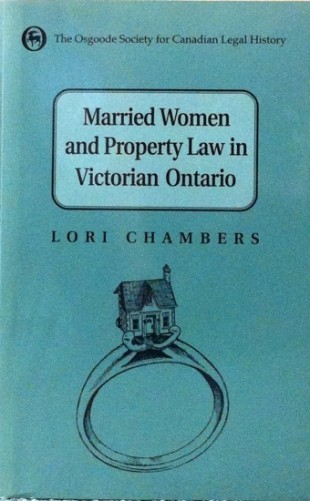by Lori Chambers, Professor, Department of History and Women’s Studies, Lakehead University. Published with the University of Toronto Press, 1997.
Married Women and Property Law in Victorian Ontario, by Professor Lori Chambers, Lakehead University, is a fascinating account of gender relationships in nineteenth-century Ontario as revealed through a series of laws which reflected Victorian attitudes to marriage, property, and power. ‘In all common law jurisdictions,’ Professor Chambers reminds us, ‘marriage, for women, represented civil death.’ Her manuscript explains the practical and theoretical implications of this reality for the Victorian family and especially for the married woman. This important revisionist study requires us to rethink a good deal of the conventional wisdom about gender relationships, the law, and the judiciary in nineteenth-century Ontario history. Of interest to all those concerned about the nineteenth-century origins of Canadian social institutions, it will prove of particular value to students of family, gender, and authority in Victorian society.


